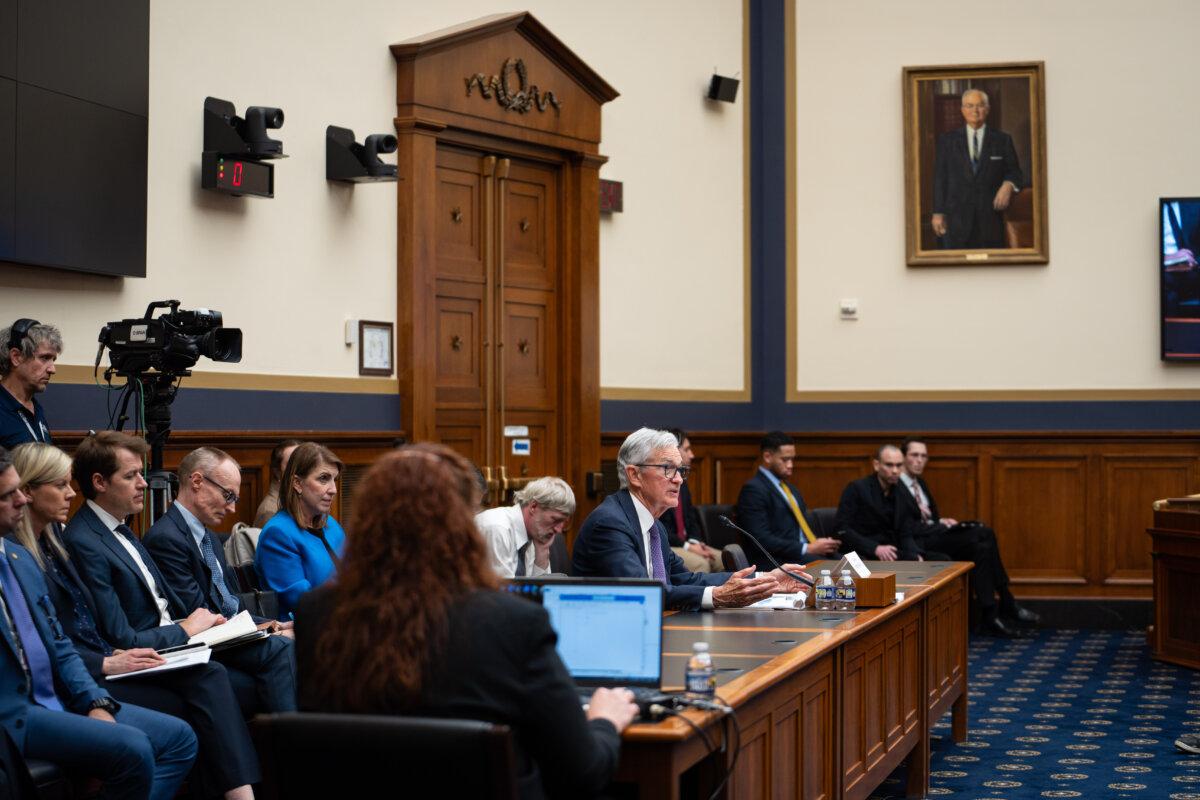By Andrew Moran
U.S. wholesale inflation unexpectedly fell in August, providing assurance that President Donald Trump’s tariffs have yet to result in rocketing price inflation.
Last month, the producer price index (PPI)—a measure of prices paid by businesses for goods and services—dipped by 0.1 percent, after advancing by 0.7 percent the previous month, according to Bureau of Labor Statistics data released on Sept. 10.
Core PPI, which excludes volatile energy and food prices, decreased by 0.1 percent from a downwardly adjusted 0.7 percent.
Both headline readings came in below the consensus estimate of 0.3 percent.
Economists monitor wholesale prices as a pipeline inflation indicator since they are early in the supply chain.
Final demand services declined by 0.2 percent, the largest monthly drop since April. This was fueled by a 1.7 percent drop in margins for final demand trade services.
Monetary policymakers place an emphasis on services as they can depict a general trend of future overall inflation.
The goods portion of the monthly PPI ticked up by 0.1 percent, with a large share of the increase coming from tobacco products.
Other goods registered modest gains, including beef and veal, processed poultry, electric power, and printed circuit assemblies, boards, modules, and modems. However, prices for utility natural gas, chicken eggs, copper base scrap, and fresh and dry vegetables fell.
Meanwhile, on a 12-month basis, producer inflation eased to a smaller-than-expected 2.6 percent from a downwardly revised 3.1 percent. Core PPI inflation also slowed to 2.8 percent, below the market forecast of 3.5 percent.
The PPI was the first batch of new inflation data.
The Bureau of Labor Statistics will release the August consumer price index on Sept. 11. According to the Cleveland Fed’s Inflation Nowcasting Model, the headline annual inflation rate is expected to rise to 2.8 percent from 2.7 percent. Core inflation is projected to hold steady at 3.1 percent.
Trump urged the Federal Reserve for a “big” interest rate cut at next week’s meeting.
“Just out: No inflation!!! ‘Too Late’ must lower the RATE, BIG, right now,” he wrote in a Truth Social post, referring to Fed Chair Jerome Powell.
Market Reaction
U.S. stocks picked up gains in pre-market trading, with the leading benchmark indexes up by as much as 0.5 percent.
Investors welcomed the softer inflation print, as it could further solidify the Fed’s widely expected interest rate cut later this month.
New CME FedWatch Tool data indicate that traders see a 90 percent chance of a quarter-point reduction to the key federal funds rate, which is currently in the target range of 4.25 to 4.5 percent.
A chorus of market watchers is debating whether a half-point rate cut could be on the table, particularly after the weaker-than-expected August jobs report and the recent preliminary annual benchmark revisions.
“Without further pressure from the White House, the Fed is set to cut rates in September. Markets are debating whether the move will be 25 or 50 basis points after weak payroll figures, though we continue to expect only a 25-bp cut given the persistent inflationary pressures,” economists at Union Bancaire Privée said in a Sept. 8 note.

Considering the lag effect of monetary policy and how deteriorating employment conditions could accelerate, Larry Tentarelli, chief technical strategist for Blue Chip Daily Trend Report, says a half-point could be worthwhile.
“In our view, a 50-bps cut next week would be more effective, but that is not being priced in by the Fed funds futures market yet,” Tentarelli said in a note emailed to The Epoch Times.
Still, the financial market is pricing in multiple rate cuts over the coming months.
The two-year Treasury yield, which typically tracks the Federal Reserve’s policy rate, dipped to below 3.54 percent after the August PPI report.
Futures data suggest investors anticipate the federal funds rate will settle at around 3 percent by the end of 2026.
The U.S. dollar index, a gauge of the greenback against a weighted basket of currencies like the British pound and Canadian dollar, was little changed at 97.8. The index has fallen by almost 10 percent this year.
The rate-setting Federal Open Market Committee will hold its next two-day policy meeting on Sept. 16 and Sept. 17.





